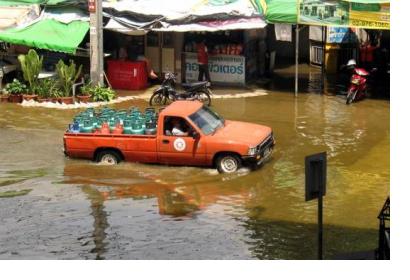Remote sensing, or obtaining information about the Earth’s surface from afar using satellites or high altitude aircraft, is an important tool for predicting, mitigating, and managing disasters. To obtain a more comprehensive view of the conditions on Earth, remote sensing analysts must often look beyond information that can be immediately extracted from satellite imagery, for example, and use proxies, or indirect measurements based on this information, in order to evaluate other factors.
A recent study, Remote Sensing-Based Proxies for Urban Disaster Risk Management and Resilience: A Review, identifies and evaluates some of these remote sensing proxies used to evaluate both pre- and post- disaster elements, taking into consideration the “built-up” environment, including buildings and transport networks, the economic environment, the social environment, and the natural environment. The authors identified these proxies through a review of 114 key publications on the topic.
In the publications highlighted by the authors, several examples of remote sensing proxies were presented. As an example of a proxy to evaluate the social environment in the post-disaster phase, the authors highlighted that in one publication, “the number of urban facilities, such as hospitals and schools … [served] as a proxy to assess the social resilience of a community to disaster. An increase in the number of facilities indicates an increase in social resilience.”
The study focuses specifically on the use of these proxies to understand urban environments, given the increasing rate of urbanisation, with the United Nations estimating that 68 percent of the world’s population will live in urban areas by 2050.
The authors maintain that increased evaluation of remote sensing proxies across a number of different fields impacted by disaster, is critical for improving disaster risk management methods.
The full study can be accessed here.

